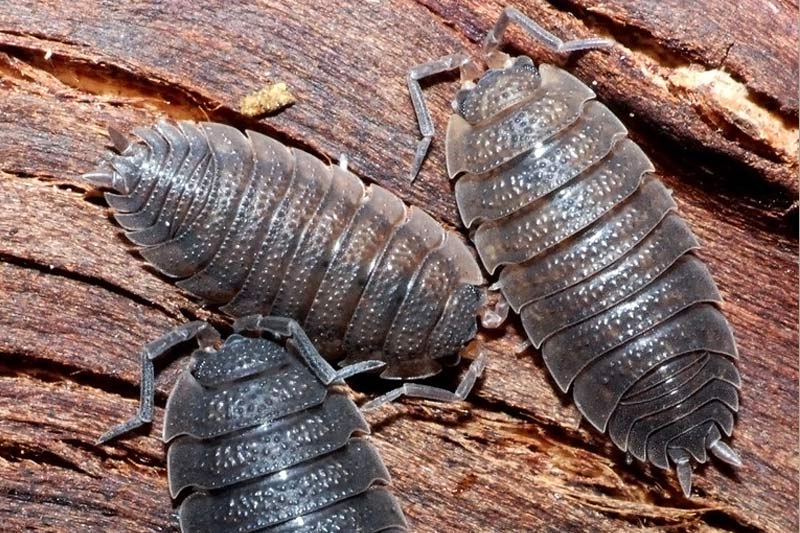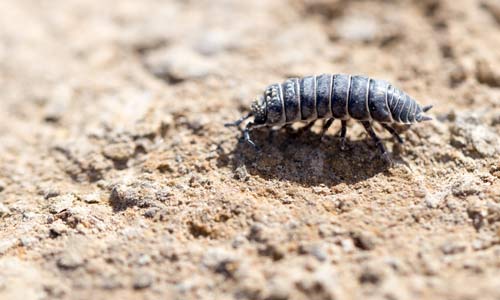Slaters
Slaters, also known as Pill Bugs and Woodlice, have been on the earth around 500 million years. They are tiny crustacean-type organisms, distant relatives of other crustaceans like crabs, lobster, shrimp and krill. They grow to around 12-15mm and are great for gardens, eating organic matter and returning nutrients to the soil. However, if you do happen to have a slaters infestation indoors, it can cause an unpleasant stench, which is why pest control solutions are necessary!
If you are dealing with a pesky slater infestation in your home, it’s time to call in the experts at Flick Pest Control. With their years of experience and expertise in pest control, our pest control technicians can quickly and effectively eliminate these nuisances from your property. Flick Pest Control uses safe and environmentally-friendly methods to ensure that your home is free from pests without causing harm to your family or pets. Don’t let slaters take over your home – contact Flick Pest Control today for expert pest control services.
Flick’s Home Protection Plans make protecting your family and home from pests easier than ever. Our effective and affordable pest control plans include an exclusive 12-month warranty, regular pest inspections, and solutions tailored to your specific situation. Slaters are included in our Gold Home Protection Plan. Find out more here.

Shield Your Family & Home Year Round from Slaters
Flick's Home Protection Plans
Flick's Home Protection Plans provide effective and affordable protection for your home and family from a wide range of pests. Our Gold plan includes preventive measures to stop slaters from entering your home in the first place, as well as reactive and emergency slater pest control services if needed. All plans come with a 12-month warranty* and easy monthly payments. With a variety of plans to choose from, you can find a plan that meets your specific needs and budget. Contact your local Flick branch to see if Home Protection is available in your area and begin shielding your family from slaters today!
Commercial Pest Solutions
Integrated Slater Solutions
It is essential for businesses to prioritise the health and safety of their employees and customers. Slaters not only pose a health risk but also damage property and reputation. Flick’s professional commercial pest control services provide tailored solutions to prevent and eliminate any pest infestations, ensuring a clean and hygienic environment for everyone. Our regular inspections and treatments help to maintain a pest-free workplace and protect your business from potential pest related damage. Trusting in Flick’s commercial pest control solutions is a smart investment in the long-term success and reputation of any business.
Learn more here or call 1300 270 019.
Common Slater Questions
Where do slaters live?
Slaters can be found nesting in cavity walls, under bricks, pavers, and pot plants. Their natural habitat includes any vegetative area such as your garden where they feed on decaying matter, mold, mildew and fungus. They are a beneficial part of the ecosystem, as they recycle nutrients and help build soil.
When are slaters most active?
Slaters are most active at night, preferring to hide during the day. This nocturnal activity is to help them avoid predators such a birds, frogs, beetles and spiders. However, it is also to avoid the heat of the sun, which can lead to water loss and desiccation.
Are slaters a pest?
Generally, the slater is actually a beneficial insect due to their diet. They assist in the production of compost and overturning of soil. There are also no recounts of harm to humans, but for those with big gardens and a large slater population, they may be bothered by their attempt at entering the home.
Why do slaters venture inside?
Slaters will venture indoors in search of moisture and mould as they’re unable to retain water due to constant excretion. Their constant urination also means that a large number of slaters inside a house will produce an unpleasant stench.
How can I prevent slaters inside?
Slaters gain access into homes if garden beds, compost bins etc. are situated too close to a home’s perimeter. Brick homes are vulnerable, as their small size allows them to enter the home through the smallest of cracks. Distance garden beds and compost bins from entry points and close up small gaps.
Common Slater Species

Slaters (also called Pill Bugs)
Apppearance
Arthropod approx. 12-15mm in length, part of the Crustacea Subphylum. Flattened, segmented body and 7 pairs of legs.
Lifestyle
Slaters usually mate during the warmer months. When disturbed, some will roll themselves into a ball to prevent their vulnerable insides. While they are easily killed with aerosol insecticides, you can also concentrate instead on preventing their entry to a home. Your local Flick Pest Control team can spray around the perimeter of your home to discourage slaters’ entry.
Habits
The slater is nocturnal and feeds on dead plant matter and vegetables. They prefer dark and damp places, such as behind bark on rotting trees and under tocks. They are in constant search of water, as they continually excrete. Extreme temperatures and sunlight may lead them to dessicate rapidly, which means they are constantly in search of cool, damp places to hide. This might be your home!
I found Slaters! Help!
Don't worry, we're here to help. Follow these steps to stay safe until help arrives!
Call a Professional
Call Flick Pest Control Immediately.
If you encounter slaters in your home or business, you may be dealing with an infestation. Don’t wait until the problem gets out of hand – we can help protect your property and ensure the health and safety of those around you. Fill out the form below or call 1300 270 019 today.
Leave the Slaters Alone
Trust Flick Pest Control to handle the situation
Our pest control technicians have the knowledge, experience, and tools necessary to effectively and safely eliminate pests from your home or business. Attempting to treat slaters on your own can be risky and may not fully eradicate the problem.
We will and ensure a safe and effective outcome for your property.
There May be More!
Don’t Go Looking Around!
Flick’s pest control experts will perform a thorough inspection of the property to identify any areas where slaters may be present, followed by the development of a treatment plan tailored to the specific needs of the situation. By implementing effective pest control strategies, we can help ensure a pest-free environment for you.

